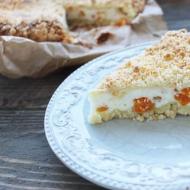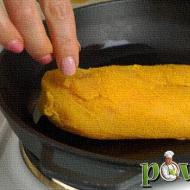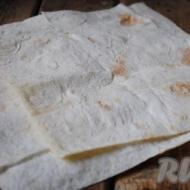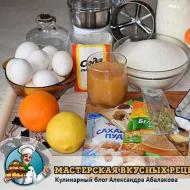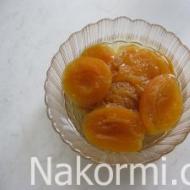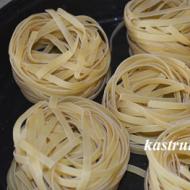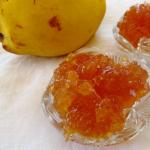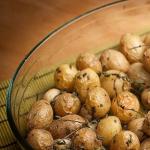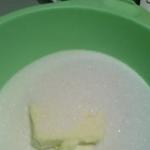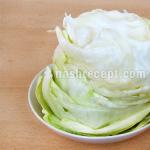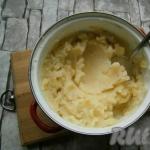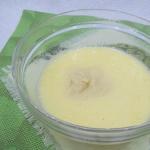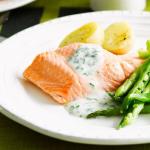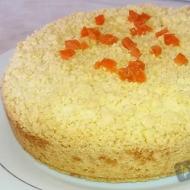
How to steam mustard correctly. How to make vigorous mustard at home. Recipe for mustard with cabbage brine
Mustard is a simple and inconspicuous sauce, but so in demand in the kitchen of every housewife. Well, what’s jellied meat without mustard, and what about sausages or a sandwich? It is also used in marinades for poultry and meat. So a jar of dark yellow sauce must be present in the refrigerator.

Table mustard is a seasoning that is obtained by mixing ground or whole mustard seeds with other ingredients. Most often it is water, salt, sugar, vinegar and vegetable oil. It is most widespread in German and Russian cuisine.
Most often it is used as a seasoning for meat dishes and as a component in the manufacture of mayonnaise.
Three main types of mustard are used to prepare the seasoning:
Black (its seeds glorified the famous Dijon mustard). White (as English mustard is called). Sarepta (Europeans call it “Russian mustard”).

Homemade mustard powder
We suggest you prepare mustard powder from the simplest recipe. You may ask, why do this if you can buy it in the store at any time? And then, homemade mustard made from powder has many advantages over store-bought mustard. Firstly, it contains no preservatives. Secondly, you can make it to your liking - vigorous, sweet, honey-flavored, spicy. Thirdly, the sauce from powder is easy to prepare and will not take up much of your time.
TIME: 5 min.
Easy
Ingredients
- ground mustard powder – 50 g;
- water – 1 glass;
- vinegar – 1 tsp;
- odorless vegetable oil – 1-2 tbsp. l.;
- salt – 1/2 tsp;
- granulated sugar – 1 tsp.

Preparation
Sift the mustard powder through a strainer to make it easier to mix.

Gradually add hot water to the powder.

Mix well until you obtain a homogeneous consistency. Using the amount of water, you can adjust the thickness of the mustard at your discretion (make it a little thicker or thinner).

Add salt and sugar, vinegar and vegetable oil. Stir again.

Place the sauce in a water bath. Simmer it, stirring constantly, for 15 minutes. If you are in no hurry to eat mustard, then put it in a jar, wrap it and put it in a warm place for a day.
In winter, you can put the jar on the radiator (if the radiator is very hot, wrap the jar in a towel).

Be sure to place the finished mustard in a container with a lid. Now you can serve it with the first or second courses.

Cooking tips
- Instead of water, you can dilute mustard powder with brine from tomatoes or cucumbers. In this case, there is no need to add salt and vinegar at all, and take half the specified portion of sugar. After mixing the brine with the powder, take a sample, if necessary, add a little sugar, vinegar and salt to your taste.

- For better results, take mustard seeds and grind them into powder.
- Mustard seeds can be used to decorate hot dishes and salads.
- To ensure that the taste of mustard does not change, it is very important to store it correctly. The store-bought version can be stored for 90 days, but such a long period is achieved through the use of preservatives. Do-it-yourself mustard can be stored for no more than 60 days, provided it is tightly closed and the temperature in the refrigerator does not exceed +5 degrees. At higher temperatures, the shelf life is reduced to 45-50 days.
Several interesting recipes
You already understand that classic mustard is easy and simple to prepare. Now we suggest experimenting a little and diversifying its taste. Use unusual recipes to make mustard from mustard powder even more vigorous, spicy and tender.

Mustard with honey

Spicy mustard
To get a particularly spicy and hot mustard, we suggest making it with the addition of spices.
Boil 1 cup of water in a small saucepan, add 150 g of mustard powder and stir thoroughly until smooth.
Now level the surface and carefully pour another 1/2 cup of boiling water over a spoon in a thin stream, do not stir, the water should remain on top. Wrap the saucepan and leave for a day.
Then add the following ingredients:
- sugar and vegetable oil (1 tablespoon each);
- salt and ground cinnamon (1/3 teaspoon each);
- ground cloves and ground black pepper (1/3 teaspoon each).
Mix everything thoroughly, transfer the resulting mass into a container, and close tightly. Spicy vigorous seasoning is ready!

Milk mustard
- Combine mustard powder (100 g) with vegetable oil (2 tablespoons) and sugar (2 teaspoons). Better yet, take honey, it maintains the strength of the mustard. Mix thoroughly so that the mass is homogeneous.
- Now pour in 150 ml of hot milk and stir.
- Add 2 teaspoons of vinegar and mix.
- Pour in another 150 ml of milk, finally mix everything, transfer to a glass container, close tightly and put in a cool place for 6 hours.
- You can increase or decrease the amount of milk, depending on what consistency you ultimately want the mustard to be.

Finally, historical information about mustard
Humanity has been familiar with mustard since ancient times. Its seeds have been used in Indian cuisine since before our era.
In Europe, mustard was first used by the monks of France in the 9th century. By the 17th century, this spicy sauce began its solemn procession throughout all European countries. Each cook contributed something different, so there were a huge variety of sauce recipes.
For example, in England it was served as mustard balls; before use, they were diluted with apple cider or vinegar.
In Russia, agronomist A. T. Bolotov first mentioned mustard in his treatise “On beating mustard oil and its usefulness.” This was in 1781. Trying to reach the level of French culinary experts, Russian chefs experimented, mixed mustard with the most unexpected ingredients and as a result received a sauce of incredible taste. For example, mustard with horseradish was invented.
Now the center of Russian mustard production is the small Volgograd village of Sarepta. It was here that at the end of the 18th century mustard cultivation was brought to an industrial level.
Homemade mustard from powder is quick and easy to prepare. The main thing is to stock up on mustard powder. There shouldn't be any difficulties with the rest of the ingredients. Water, sugar, salt, vegetable oil, spices if desired - that’s the whole simple set.
I personally have been making mustard for over six years now. In 2011, for my birthday, I tried to prepare it for canapés, and since then I haven’t bought store-bought... My own is always more aromatic and fresh. Plus, you can experiment endlessly with spices!
My strong point is strong homemade mustard! 😀 I admit, I just don’t understand the other one... Well, really - why is it needed if it has some vague taste?! In my opinion, this product should a priori be piquant. You know, at the level - tear your eyes out! 😉
However, we must not forget that spices also add pungency to mustard. However, you can do without them altogether. It won't be bad either. But with them, in my opinion, it’s better. The main thing is that you like the seasoning you use, that is, don’t take risks with unfamiliar spices, because you’ll get quite a lot of mustard from the given amount of ingredients. It’s best to try a new spice in soup or when cooking potatoes. Assess the taste and, if everything is good, use it further.
This time I took suneli hops and Provençal herbs. The main thing here is not to overdo it. For 1 glass of mustard powder, 0.5 coffee spoon of each seasoning was enough for me. If you take something hotter, such as cayenne pepper, then the proportions need to be further reduced. And yes - homemade mustard made from instant powder gets stronger day by day when infused! 😉
List of ingredients:

How to make homemade mustard from powder quickly:
So, salt and sugar were poured into hot boiled water (its temperature should be about 65-70 degrees). Stir until completely dissolved. 
Next I added mustard powder. I would like to pay special attention to its density - because in one glass (per 200 ml of liquid) you get not 200, but 100 grams of this powder. 
Stir thoroughly until a beautiful homogeneous mass without lumps is obtained. 
I also added sunflower oil.
If you don’t have raspberry vinegar, you can use any other vinegar - for example, apple, balsamic, or regular table vinegar. The main thing is not to confuse it with 70% acetic acid :)
When choosing oil, you can give preference to olive oil. Purified or natural - also your choice. I like fragrant mustard, so I use unrefined sunflower oil. 
After thoroughly mixing the oil with vinegar, I added suneli hops and Provençal herbs. I experiment with spices in mustard almost every time. True, khmeli-suneli is still my favorite;) 
For the last time, I mixed the whole mass most thoroughly. The consistency was good - neither runny nor too thick. That's all - homemade mustard made from instant powder, almost ready! 
Why almost? Because now you need to put it in jars, close the lids and leave it warm (just in the kitchen) for 3 hours. 
During this time, it will ripen, after which it must be stored in the refrigerator. And, of course, start eating with all sorts of goodies! ;) Sausage, stuffed eggs, any sandwiches, dumplings, soups... Just with boiled potatoes - very tasty, and a completely different mood from the meal! ;) 
Now you know that homemade mustard made from powder is quick, easy and delicious! After all, you tried it and you know? ;)
Watch announcements of the best articles! Subscribe to the Baking Online pages in,
In this article we tell you how to prepare mustard at home. You will learn how to make mustard from mustard powder correctly. We will look at the classic recipe for making the sauce, as well as with the addition of cucumber pickle, honey and applesauce.
How to brew mustard powder with water
To prepare mustard at home, use whole grains and powder. In this article we will look at the features of preparing homemade mustard from powder.
You can make your own mustard sauce
Before diluting the mustard, sift the powder. This will make it more crumbly and reduce the number of lumps. Use a whisk to stir. With its help, you will quickly get a homogeneous consistency.
To brew homemade mustard from mustard powder, use warm or hot water. Boiling water makes the taste of the sauce softer and not hot.
To get a more aromatic sauce, add cinnamon, cloves, nutmeg, and white wine to the mustard. Mustard with honey has a softer and piquant taste. To soften the taste, mayonnaise is added to the vigorous sauce.
Infuse mustard from mustard powder at home for at least a day. The longer you steep the sauce, the sharper the taste you will get.
You learned how to brew mustard correctly. Now let's look at various mustard recipes from mustard powder at home.
Recipes for making mustard from powder
 Mustard can be prepared not only from grains, but also from powder
Mustard can be prepared not only from grains, but also from powder
There are many recipes for making mustard from powder. Residents of different countries prepare this sauce in their own way, adding spices, fruits, and wine. Most recipes are based on the classic mustard recipe made from mustard powder.
Classic recipe
In the classic recipe for making mustard at home, the powder is diluted with water without adding vinegar and various spices. To keep the sauce fresh longer, place a slice of lemon on top and store the product covered in the refrigerator.
You will need:
- mustard powder - 3 tablespoons;
- vegetable oil - 2 teaspoons;
- salt - ½ teaspoon;
- water - 200 ml.
How to cook:
- Pour mustard powder with water, stir until smooth and leave in a warm place for 10 hours.
- Pour off excess liquid from the surface of the sauce.
- Add sugar, salt and butter, stir.
Calorie content:
Calorie content per 100 g. classic mustard 120 kcal.
Spicy mustard
To make mustard more spicy, it should be infused for at least a week, and the amount of powder should be taken twice as much as indicated in the classic recipe. Consider the recipe for spicy mustard.
You will need:
- mustard powder - 6 tablespoons;
- water - 8 tablespoons;
- granulated sugar - 1.5 teaspoons;
- salt - 1 teaspoon;
- vegetable oil - 1.5 tablespoons;
- vinegar - 1 tablespoon.
How to cook:
- Mix mustard powder, salt and sugar, pour hot water over them and mix with a whisk.
- Add vegetable oil and vinegar to the sauce, stir and leave for a week in a tightly closed container.
Calorie content:
Calorie content per 100 g. spicy mustard 193 kcal.
Homemade “Russian” mustard
At the beginning of the 18th century, mustard appeared in Russia and immediately gained popularity. It was added to dishes of meat, poultry, fish, and combined with vegetables, fruits and berries. Let's look at a traditional recipe for homemade mustard made from powder in Russian.
You will need:
- mustard powder - 100 g;
- vegetable oil - 2 tablespoons;
- bay leaf - 2 pcs.;
- salt - 1 teaspoon;
- sugar - 1 tablespoon;
- cinnamon - 1 pinch;
- cloves - 1 pc.;
- vinegar 3% - 125 ml;
- water - 125 ml.
How to cook:
- Boil water over low heat, add bay leaf, spices, salt and sugar to it, stir.
- Remove from heat, cover, and let steep for 10 minutes.
- Strain the cooled broth.
- Pour mustard powder into the broth and stir until smooth.
- Pour in vegetable oil and vinegar, stir. You should have the consistency of a liquid slurry.
- Transfer the sauce to a glass container and leave for 24 hours covered.
Calorie content:
Calorie content per 100 g. Russian mustard 147 kcal.
Mustard with cucumber brine
Cabbage, tomato or cucumber brine gives mustard a piquant sourness. If there is no vinegar in the marinade, then 3% essence must be added to the recipe. Consider a recipe for homemade mustard made from mustard powder and cucumber brine.
You will need:
- mustard powder - ½ cup;
- vegetable oil - 1 teaspoon;
- granulated sugar - ½ teaspoon;
- cucumber pickle - 150 ml.
How to cook:
- Combine mustard powder with sugar, dilute with brine and mix.
- Transfer the mixture into a glass container and leave to infuse overnight.
- Drain off excess liquid, add vegetable oil and stir.
Calorie content:
Calorie content per 100 g. mustard with cucumber brine 177 kcal.
Powdered mustard with honey
Mustard combined with honey has a softer and piquant taste. To prepare the sauce, both fresh honey and already candied honey are used. Before cooking, it is melted in a water bath or in a microwave oven. We'll tell you how to prepare mustard with fresh harvest honey.
You will need:
- mustard powder - 100 g;
- water - 60 ml;
- vegetable oil - 25 ml;
- honey - 10 ml;
- salt - ¼ teaspoon.
How to cook:
- Sift mustard powder, add salt, add hot water and stir until smooth.
- Add oil, lemon juice and honey, stir.
- Transfer the sauce to a glass container, cover with a lid and leave for 7 days.
Calorie content:
Calorie content per 100 g. mustard with honey 306 kcal.
French mustard
French mustard has a mild taste and spicy aroma. There are many traditional sauce recipes in France. Let's consider one of them.
You will need:
- mustard powder - 200 gr.;
- cinnamon - 1 pinch;
- cloves - 1 pc.;
- granulated sugar - 1 tablespoon;
- salt - ½ teaspoon;
- onion - 1 pc.;
- water - 125 ml;
- vinegar - ¼ cup.
How to cook:
- Sift the mustard powder and gradually dilute it with warm water until the consistency of a thick dough.
- Bring the remaining water to a boil and pour it over the resulting mustard mixture.
- Infuse mustard for 24 hours.
- Drain excess liquid from the surface of the sauce, add vinegar, sugar, salt and spices, stir until smooth.
- Pass the onion through a meat grinder, fry the resulting mass over low heat and combine it with mustard.
Calorie content:
Calorie content per 100 g. French mustard 168 kcal.
Mustard with applesauce
Sour apple varieties, such as Antonovka, are suitable for preparing mustard with applesauce. Consider a recipe for homemade mustard made from powder with fruit puree, which is suitable for dressing salads, meat and fish dishes.
You will need:
- mustard powder - 1 tablespoon;
- granulated sugar - 20 gr.;
- salt - 1 pinch;
- cinnamon - 1 pinch;
- vegetable oil - 30 ml;
- vinegar - 1.5 tablespoons;
- lemon juice - 1 teaspoon;
- apple - 1 pc.
How to cook:
- Wrap the apple in foil and bake it in the oven at 180 degrees for 10 minutes.
- Peel the cooled apple, rub the pulp through a strainer and combine with mustard powder, salt, sugar, cinnamon and lemon juice, stir until smooth.
- Lastly, add vinegar and stir. If the mustard tastes sour, add sugar.
- Infuse the sauce for 48 hours in the refrigerator.
Calorie content:
Calorie content per 100 g. mustard with applesauce 138 kcal.
For more information on how to prepare mustard, watch the video:
What to remember
- To make mustard from powder, just dilute it with hot or warm water. Boiling water softens the taste of the sauce and reduces the heat.
- To improve the taste, spices, fruits, and wine are added to mustard.
- Mustard combined with honey has a softer and piquant taste.
- The longer you steep the mustard, the stronger the flavor of the sauce.
Industrially produced mustard tastes significantly inferior to homemade mustard. If you prepare it according to the classic recipe, it will turn out spicy, and for those who like sweet or sour, there are sauce options containing sugar, honey or fruit puree. In addition, mustard prepared from powder at home is absolutely natural and healthy. Even an inexperienced cook will quickly cope with the task.
- Mustard powder must be mixed with water whose temperature does not exceed 60 degrees, otherwise the finished product will lose its “vigorous” flavor and become bland. The richness of the taste depends on the temperature of the water. The colder the liquid used for dilution, the spicier the homemade seasoning turns out.
- The liquid should be added to the powder gradually, in small portions. In this case, the mixture must be constantly stirred to avoid the appearance of lumps.
- In order for the mustard consistency to be homogeneous, the powder base must first be sifted.
- Don't despair if the product turns out to be too liquid. You can correct the situation and give the seasoning sufficient thickness by simply placing it in the refrigerator for a while.
- To protect the mixture from drying out, you can add a small amount of full-fat pasteurized milk while mixing the ingredients. A slice of lemon placed on top will help maintain freshness.
- Hot sauce goes well with various spices and herbs, such as cinnamon, ground coriander or grated cloves, and the taste of the finished product can also be enriched with pieces of fruit, herbs and even buckwheat honey.
- In Asian countries, the spicy aroma of mustard is diluted with notes of nutmeg, ginger and Japanese wasabi. This gives the product a specific taste.
- Delicate French mustard contains not only powder, but also whole grains, so it should be seasoned with dry white wine or grape vinegar.
- Drinking water in the recipe can be replaced with brine from sauerkraut, pickled tomatoes or cucumbers, as well as liquid applesauce.
- mustard powder - 3 tbsp. l. with a slide;
- hot water - 100 ml;
- granulated sugar - 1/2 tbsp. l.;
- vegetable oil - 1/2 tbsp. l.;
- salt - 1/4 tbsp. l.
- 5. If the consistency of the mustard turns out to be too thin, then the mixture must be kept in the refrigerator for another day. This will help the product become thicker and denser, and also brew better.
- liquid from pickled cucumbers - 220 ml;
- mustard seed powder - 3 tbsp. l.;
- sunflower oil - 1–2 tbsp. l.
- 1. Pour the cooled cucumber brine into a deep, clean container.
- 2. Add mustard powder there.
- 3. Wait until it gets wet.
- 4. Mix the mixture thoroughly with a wooden spatula until the consistency is homogeneous.
- 5. Let the finished product stand for a while.
- 6. Pour in the oil and stir again.
- mustard powder - 2/3 cup;
- vinegar-based tomato brine - 330 ml;
- sunflower oil - 2 tbsp. l.;
- sugar - 1/4 tsp;
- salt - to taste.
- 1. Pour most of the strained brine into a previously prepared half-liter glass container.
- 2. Add mustard powder to it.
- 3. Let it get completely wet.
- 4. Stir the mixture until smooth, gradually adding the remaining brine. If the mustard is too thick, you can add more brine, and if it is liquid, a little powder.
- 5. Add sugar and salt.
- 6. Stir the mass thoroughly again.
- 7. Pour in sunflower oil to slightly soften the resulting seasoning and mix again. To obtain a more delicate taste, the indicated amount of oil can be increased.
- mustard powder - 50 g;
- cabbage brine mixed with 1/2 tsp. table vinegar (9%) - 1 glass;
- sugar - 1 tbsp. l.;
- salt - to taste;
- refined oil - 1–2 tbsp. l.
- water - 50 ml;
- fine table salt - 10 g;
- mustard seed powder - 50 g;
- honey (preferably buckwheat) - 50 g;
- lemon juice - 1 tbsp. l.;
- sunflower oil - 1 tbsp. l.
- 1. Mix mustard powder passed through a sieve with salt.
- 2. Pour water into the composition.
- 3. Stir thoroughly to a paste-like consistency.
- 4. Melt the honey in a microwave oven or in a water bath until it becomes as liquid and transparent as possible.
- 5. Pour it into the mustard mixture, add lemon juice and vegetable oil.
- 6. Stir the seasoning again.
- 7. Pour the mustard into a clean glass container and close the lid tightly. Leave to infuse for 4 days.
- large sweet apple - 1 pc.;
- mustard powder - 1 tbsp. l.;
- sunflower oil - 1 tbsp. l.;
- apple cider vinegar - 2 tbsp. l.;
- brown sugar - 1 tsp;
- lemon juice - 1 tsp;
- cinnamon - half a teaspoon;
- cloves - 3 pcs.;
- salt - to taste.
- 1. Remove the apple core, wrap the fruit in foil and place in the oven. Cook at a temperature of 170–180 degrees for a quarter of an hour.
- 2. Peel the cooked apple, cut into small pieces and pass through a sieve to obtain a puree-like mass.
- 3. Add mustard powder, sugar and salt crushed in a mortar, sunflower oil and lemon juice to the resulting puree.
- 4. Mix the composition thoroughly using a blender.
- 5. Pour the vinegar into an enamel pan.
- 6. Add cinnamon and cloves.
- 7. Bring the mixture to a boil and remove from heat.
- 8. Pour vinegar with spices into the mustard mixture.
- 9. Stir again until smooth.
- 10. Transfer to a clean glass jar and leave for 2 days, stirring daily.
- any fruit (mix) - 1 kg;
- sugar - 1/2 kg;
- orange juice - 0.7 l;
- mustard powder - 50 g;
- white wine - 1 glass.
- 1. Cut the fruit into large pieces. If you remove the skins, the syrup will be lighter.
- 2. Cover them with sugar.
- 3. Pour in orange juice.
- 4. Leave in an open container for a day until the sand is completely dissolved. Within 24 hours, you need to stir the mixture a couple of times.
- 5. Place a colander in the pan.
- 6. Transfer the fruit mixture into it.
- 7. Allow the fruit juice to drain completely.
- 8. Place it over medium heat, bring to a boil and simmer until the quantity is reduced by exactly half. Remove the foam periodically with a slotted spoon.
- 9. Pour the finished syrup over the squeezed fruit again.
- 10. Leave the preparation for another day for the composition to infuse.
- 11. Dissolve mustard powder in a glass of white wine in an enamel bowl and carefully heat the mixture over low heat.
- 12. Stirring constantly, bring the mustard mixture to 100 degrees and boil for another two minutes.
- 13. Separate the fruit from the syrup again and strain the latter through a sieve or cheesecloth.
- 14. Place the fruit in sterilized jars.
- 15. Combine mustard and fruit syrup.
- 16. Pour this mixture over the fruits, covering them completely.
- 17. Gently squeeze out excess air by pressing on the fruit with a spoon.
- mustard powder - 4 tbsp. l.;
- sugar - 2 tbsp. l.;
- oil - 1 tbsp. l.;
- salt - to taste;
- flour – 1 tbsp. l.;
- water – 60 ml;
- white wine vinegar – 50 ml.
- 1. Mix mustard powder with flour.
- 2. Pour water brought to 60 degrees into a deep bowl.
- 3. Add a mixture of powdered component and flour to it.
- 4. Let the mixture sit for 15–20 minutes.
- 5. Add sugar and salt.
- 6. Stir and leave for a few more minutes.
- 7. Pour in oil and vinegar. Stir and leave for 40–60 minutes.
- Dijon mustard;
- Mediterranean;
- Danish.
- mustard powder - 100 grams;
- warm water - 1/2 cup;
- vinegar solution (3%) - 1/2 cup;
- sunflower oil - 2 tbsp. l.;
- granulated sugar - 1 tbsp. l.;
- salt - 1/2 tsp;
- bay leaf - 2 pcs.;
- cinnamon - on the tip of a knife;
- cloves - a pair of dried buds.
- 1. Heat water in a bowl.
- 2. Pour cinnamon and cloves into it, add bay leaves, salt and sugar.
- 3. Bring to a boil and simmer for a few more minutes.
- 4. Cool the broth and strain.
- 5. Pour the aromatic liquid in small portions into the mustard powder.
- 6. Stir until smooth.
- 7. Add oil and vinegar gradually.
- mustard powder - 3 tbsp. l.;
- crushed cloves - 6 g;
- sugar - 3 tbsp. l.;
- vinegar - to taste.
- 1. Place powder, sugar and cloves in a bowl.
- 2. Pour in vinegar and stir until liquid consistency.
- 3. Pour the mixture into jars and cover them with lids.
- 4. Place the jars in the switched off oven, preheated to minimum temperature, for about 40 minutes.
- 5. Remove and keep at room temperature.
- mustard powder - 1 cup;
- water - 2 glasses;
- sunflower oil - 3 tbsp. l.;
- sugar - 3 tbsp. l.;
- acetic acid - 1.5 tbsp. l.;
- salt - 1/2 tsp;
- bay leaf - 2 pcs.;
- ground black pepper - to taste;
- cinnamon - a small pinch;
- cloves - three dry buds.
- 1. Pour water into a saucepan.
- 2. Add sugar, salt, pepper, bay leaf, cinnamon, cloves.
- 3. Bring the liquid to a boil.
- 4. Place it in a warm place to infuse for 24 hours.
- 5. The next day, boil the broth again and pour acetic acid into it.
- 6. Pour mustard powder into a deep bowl.
- 7. Add the strained infusion with spices there.
- 8. Mix the mixture thoroughly and put it in a warm place for 3-4 hours.
- 9. Add oil.
- 10. Stir again.
- dry white wine - 2 glasses;
- mustard powder (from white mustard) - 60 g;
- black mustard seeds - 80 g;
- large onions - 2 pcs.;
- garlic cloves - 2 pcs.;
- flower honey - 2 tbsp. l.;
- olive oil - 1 tbsp. l.;
- salt - to taste.
- 1. Finely chop the onion.
- 2. Squeeze the garlic through a press.
- 3. Place vegetables in an enamel pan.
- 4. Pour in wine.
- 5. Bring the mixture to a boil.
- 6. Reduce temperature and simmer for another 5 minutes over low heat.
- 7. Drain the resulting wine broth, strain it and cool slightly.
- 8. Add melted honey to the solution.
- 9. Pour salt there and stir.
- 10. Pour dry mustard powder into a saucepan with wine.
- 11. Grind it evenly so that the mass is homogeneous, without lumps.
- 9. Add oil.
- 13. Pour grains into the wine-mustard mixture.
- 14. Simmer over low heat, stirring regularly until the liquid reaches the desired thickness.
- mustard powder - 100 g;
- water - 3/4 cup;
- sugar - 1 tbsp. l.;
- salt - 1 tsp;
- 9% apple cider vinegar - 100 ml;
- vegetable oil - 1 tbsp. l.;
- bay leaf - 1 pc.;
- cinnamon - to taste.
- 1. Put water on low heat.
- 2. Add salt, sugar, bay leaf and cinnamon.
- 3. Keep the mixture on fire until the grains are completely dissolved.
- 4. Cool.
- 5. Pour in vinegar.
- 6. Brew mustard powder with half of the resulting broth (pour in gradually).
- 7. Stir thoroughly.
- 8. Place in a warm place for a day.
- 9. Pour in the remaining broth.
- 10. Stir.
- mustard powder - 2 tbsp. l.;
- granulated sugar - 1/2 tbsp. l.;
- apple cider vinegar or white wine vinegar - 100 ml;
- whipped cream or heavy sour cream - 2 tbsp. l.
- 1. Mix dry ingredients.
- 2. Gradually add vinegar to obtain the consistency of thick sour cream.
- 3. Thoroughly grind the mixture until smooth.
- 4. Leave for 6 minutes.
- 5. Add cream and mix again.
- white mustard seeds - a third of a glass;
- black and Sarepta mustard grains - 1 tbsp. l.;
- mustard powder - 2 tbsp. l.;
- water - half a glass;
- apple cider vinegar, orange juice and honey - a quarter cup each;
- grated lemon zest (you can use frozen) - to taste;
- salt - a small pinch;
- dried dill - on the tip of a knife.
- 1. Mix the grains and crush them a little in a mortar.
- 2. Add dry powder there.
- 3. Add fruit juice, vinegar and warm water to the dry mixture in small portions.
- 4. Stir until smooth.
- 5. Add salt, dill, zest and honey.
- 6. Lightly stir with a blender until it becomes a thick cream, but keeping the grains intact.
Show all
Making your own mustard at home is very easy. But before moving directly to the cooking process itself, you should familiarize yourself with the rules that allow you to get a tasty and healthy product:
In addition, it should be borne in mind that the taste of the seasoning can be varied:
The finished product should be placed in a tightly closed sterilized container so that it does not dry out and lose its sharpness, and also acquires the desired consistency. The shelf life of homemade mustard in the refrigerator is no more than 10 days.
Traditional homemade mustard
The classic recipe for making mustard at home involves using ready-made powder as a base for seasoning. However, in order for the resulting product to have a richer and brighter taste, and also to acquire a specific pungent aftertaste, it is advisable to grind the mustard powder from the grains yourself.
In total, there are three types of grains: black, white and Sarepta. The taste, aroma and consistency of the finished product depend on their variety. The latter are very popular in Russia. They are the main component used in the manufacture of store-bought mustard or mustard powder. The traditional homemade seasoning recipe is based on powder from Sarepta grains.
Ingredients:
Cooking technology step by step:



Mustard in brine
Mustard recipes with the addition of marinade are very popular in the winter season. A kind of vegetable juice already contains a sufficient amount of salt and spices.
The piquant taste of homemade mustard in brine will delight true lovers of fiery spices. Experienced chefs recommend preparing the seasoning exclusively with ice brine, this gives the product additional spiciness.
With cucumber brine

This recipe uses brine from pickled cucumbers, not pickled cucumbers. It goes well with mustard powder, and the spices and garlic it contains significantly improve the taste of homemade seasoning.
Ingredients:
Cooking algorithm:
The resulting seasoning should be infused in the refrigerator in a tightly closed glass jar for 24–72 hours. The vegetable oil in this recipe can be replaced with olive, flaxseed or any other. This will not only make the product more tender, but will also be the highlight of the recipe.
In tomato brine

This recipe is intended exclusively for spicy lovers. For preparation, you must use yellow mustard powder.
Ingredients:
Preparation:
Mustard should be infused in a dark place for 24 hours.
With added cabbage marinade

Mustard in cabbage brine has a spicy taste. And the preparation technology is slightly different from previous methods: in this recipe, the liquid must be gradually poured into the powder.
Ingredients:
Preparation:

You can omit the vinegar in this recipe or replace it with a small amount of freshly squeezed lemon juice.
Sweet mustard recipes
Mustard sauce doesn't always have to be too spicy or salty. The powder also goes well with sweet ingredients, such as fruits or berries.
In Russia, they prefer to prepare tasty and healthy mustard using apple or pear puree. Honey seasoning has special healing properties. It can be taken in small portions for colds or used for food.
With honey

Delicate and aromatic honey mustard leaves a pleasant aftertaste and goes perfectly with meat and fish. Chefs all over the world prefer to use this seasoning for dishes containing eggs.
Ingredients:
Preparation:
The finished product should be infused at a temperature of 20 to 22 degrees Celsius. Afterwards, the jar should be uncorked, stirred, drained of excess liquid (if any comes out) and stored in the refrigerator. If you want to diversify the taste of the seasoning, you can use ground paprika or ginger. This will help add spice to any dish, and also give the sauce medicinal properties.
Fruity on applesauce

Apple mustard has a subtle aroma of ripe apple and goes well with cheese or lamb dishes. If desired, this fruit can be replaced with a ripe pear. Pear mustard is in no way inferior in taste to apple mustard and goes well with baked chicken or turkey.
Ingredients:
Cooking technology:
If you want to diversify the taste of apple mustard, you can add pieces of grapes. Ground walnut kernels are also suitable as an addition to this sauce.
With added fruit (Italian mostarda)

This condiment is more like fruit drenched in mustard syrup than traditional paste-like mustard. But in terms of taste, this sweet dish with bitterness is in no way inferior to other mustard sauce options.
Ingredients:
Preparation:
Jars of mostarda should be stored in a cool, dark place with the lids tightly closed. Before serving, you can add sesame seeds or diversify the taste with a light note of ground paprika.
Sweet seasoning

Powdered mustard has a distinct sweet flavor without being too spicy. If desired, the amount of sugar can be reduced.
Ingredients:
Preparation:
Sweet mustard does not need to be infused for several days. It is ready to eat literally an hour after preparation.
Mustard - Russian or overseas?
Mustard sauce is loved to be eaten not only in Russia, but also in many European countries. The most famous foreign seasonings among chefs around the world today are:
Russian

Vigorous Russian mustard is perfect for hot first courses and meat. It is supposed to be spread on bread, and also placed on top of pieces of jellied meat.
Ingredients:
Preparation:
The product is almost ready. Now you need to put it in jars, close them tightly and put them in the refrigerator for 24 hours to infuse.
Old Russian recipe

Ingredients:
Preparation:
The shelf life of such a simple seasoning is about a year. If the mustard becomes too thick, you can re-thin it with vinegar. Ordinary vegetable oil will help make the overly pungent taste more delicate.

In the USSR, there was a special GOST, according to which tasty, spicy and very hot table mustard was made.
Ingredients:
Cooking algorithm:
Soviet mustard is ready for use almost immediately. But it is better to let it ripen for another 24 hours in a cool place. It is recommended to serve this sauce along with jellied meat, lard, and fatty soup.
Dijon seasoning from France

Many centuries ago, French monks were so captivated by the taste of the unusual hot seasoning that they stole the cooking technology from the Romans and started producing Dijon mustard. This sauce has gained popularity in most European countries. For many centuries, Dijon was rightfully considered the mustard capital of the world and has not lost this status to this day.
Ingredients:
Cooking algorithm:
As soon as the resulting composition has cooled, it should be poured into jars and closed tightly with lids. Dijon sauce must be stored in the refrigerator. The maximum shelf life is 3 months.
Mediterranean with bay leaf

This sauce goes well with fish and vegetables. The spicy seasoning is also good as a dressing for salads with olives and black olives.
Ingredients:
Preparation:
Leave the resulting composition to ripen at room temperature for another 24 hours. Then mix the mustard seasoning again and put it in the refrigerator.
Danish mustard dressing

This recipe is very simple, and the taste of the seasoning is soft and refined in a European way. This sauce can be used as a pleasant addition to spicy sausages or milk sausages, as well as stewed vegetables with mushrooms.
In Denmark, herring is marinated in this mustard in a special way.
Ingredients:
Cooking algorithm:
How to properly prepare mustard with grains?

Homemade grain mustard not only has a pleasant taste, but also looks very appetizing. You can use one type of grain, however, the dish will look more aesthetically pleasing if you add multi-colored grains.
Ingredients:
Cooking technology:
You can store this sauce in the refrigerator. It is used as a salad dressing, and also as a marinade for any type of meat.
Asians have always known a lot about spices; it was they who first began to use mustard in food. Subsequently, it became known everywhere, the French began to prepare sauce from it and became famous throughout the world. They took ground mustard seeds, seasoned them with vinegar, water and other ingredients and made a wonderful condiment.
Everyone liked this sauce and it began to be widely used in Russian cuisine. Mustard sauce is often found on the holiday table, as it goes well with many dishes and snacks. In addition to excellent taste, this spice has many positive health properties.
Positive properties of mustard
- Under the influence of this seasoning, gastric juice begins to be produced and appetite increases;
- Improves brain function;
- Improves metabolism, breaks down fat. That is why consuming this product is useful for those losing weight. It dissolves fat not only inside, but also outside. Mustard powder is often used for washing greasy dishes;
- Has antiseptic properties. It can be used to prevent the entry of microbes through scratches or open wounds;
- It has a warming effect on muscles, promotes vasodilation, which has a beneficial effect on the treatment of diseases such as rheumatism, radiculitis, arthritis, gout, etc.;
- Cures toothache and headache;
- Helps with constipation, colds, diabetes, lowers sugar levels.

You can purchase this product on the shelves of our stores, but, unfortunately, in addition to mustard powder, it contains many chemicals that can be harmful to our health.
Housewives who care about the health of their family can easily prepare such a sauce at home; it will be no less tasty than store-bought, but much healthier. Even the most inexperienced cook or chef can prepare it.
However, those who have some problems with the functioning of the gastric tract or allergies should still be careful about consuming this hot spice. Let's learn how to make mustard from dry powder.

What you need to know about making mustard
Any dish acquires a great taste if homemade mustard is added to it. But most of all, this spice is suitable for meat. In Germany they like to eat lard with aromatic and spicy mustard.
Before you learn how to make mustard powder, you will need to purchase it. Ground mustard is a light yellow powder. You need to make sure that there are no impurities or inclusions, otherwise the taste can be ruined.
If you do not want the seasoning to lose its pungency, then do not dilute the sauce with boiling water. You can take slightly cooled but hot water. Ground nuts and mayonnaise will enrich the taste of the sauce.
You should not store mustard sauce in the refrigerator for a long time, as it may lose its taste; it is better to consume it at one meal and make another the next.
But if you put it in a glass container and close it with a lid, you can store it in the refrigerator for some more time. But you should not store it for more than a month, as the taste disappears.

If you have homemade mustard made from powder in your refrigerator, you can safely use it to wash dishes. It perfectly cleans any greasy surfaces, as it has the ability to dissolve fats.
And best of all, once you learn how to make mustard from powder, you don't have to strictly follow recipes. You can add various ingredients yourself, depending on your own taste. Strict adherence to dosage is also not necessary.

Classic mustard recipe
To prepare classic mustard sauce, prepare the following products:
- 50 grams mustard (powder)
- 1/2 cup (100 grams) water,
- some apple cider vinegar
- a pinch of salt,
- a pinch of granulated sugar
- 1 tablespoon olive oil, preferably extra virgin,
- a little turmeric powder.
Now let's find out the cooking method. The finer the mustard powder, the better. Therefore, before cooking, you can additionally grind it. Now dissolve the powder in water, preferably hot, but not in boiling water.

You should get a homogeneous mass without any lumps. Next, you need to pick up the dissolved mustard in a water bath for twenty minutes. Then you can add granulated sugar and salt.
After this, enrich the taste of the sauce with olive oil and apple cider vinegar, pouring it into the mixture and stirring well. Add turmeric as it makes the dish more visually appealing. Stir until you have a thick, homogeneous porridge.

Unusual ways to prepare mustard
The ingredients for cooking may change, but the method remains the same. Our ancestors loved to make this sauce nuclear with sourness. Classic Russian mustard was prepared from vegetable brine, most often cucumber, tomato, cabbage was also in use.
If you want to get an excellent dressing for meat and fish dishes, then learn how to prepare mustard from powder in brine.
Take the following ingredients:
- 50 grams of fine mustard powder,
- 100 ml cucumber or vegetable brine,
- 6 grams of cloves (it must be ground),
- a little sugar to taste (ground into powder),
- apple cider vinegar to taste.
First, make sure that the finest mustard gets into the sauce. To do this, take a sieve and pass it through it. Then mix the vegetable brine with the powder.
The mustard should be completely dissolved in it, so slightly heat the vegetable brine, but do not boil. You will get a homogeneous mass, but it will be liquid at first. To give it thickness, you need to heat it in a water bath.
Keep the mixture on the stove for 20 minutes. In order for the mass to obtain a homogeneous consistency, it must be stirred constantly. After the water bath, feel free to add all the other ingredients, don’t forget to mix everything well.

Mustard in French
If mustard made from powder at home with cucumber brine is a traditional Russian version, then in France it was prepared differently. As you know, the French were the first to prepare mustard sauce. Although many peoples are ready to argue with this.
However, French mustard will turn out truly magnificent, and it can be an excellent appetizer for any holiday table.
Ingredients:
- 600 grams of mustard powder,
- one glass of granulated sugar,
- one large spoonful of rye bread crumbs,
- 1 small spoon of salt,
- a pinch of black pepper (ground0,
- olives in a jar (chopped),
- capers in a jar (chopped),
- 2 salted herring (chopped),
- 4 large spoons of liquid from a herring jar,
- one glass of vinegar.
All ingredients are mixed until smooth. You should not eat the sauce immediately; after a day it will become more aromatic and acquire a rich taste.
You can serve this seasoning for both first and second courses. Dijon mustard is incredibly popular and is made from black powder, various spices and herbs.

Mediterranean option
This spice was also used in Mediterranean countries.
They took the following ingredients:
- mustard powder (100 grams),
- water 1/3 cup),
- sugar (one large spoon),
- salt (one small spoon),
- apple cider vinegar (100 ml),
- vegetable oil (1 tbsp),
- bay leaf and cinnamon to taste.
To begin with, they prepared a decoction in water with cinnamon, sugar, salt, and bay leaf. The broth was simmered until it became saturated. After it cooled, vinegar was added to it.
Mustard powder was rubbed into this mixture. Once a homogeneous mass was obtained, the sauce was left for several hours, and then it could be served. As you can see, the mustard recipe is not much different from the classic version.

English version of mustard
In England, mustard sauce is made not from powder, but from ground grains. And their sauce is also surprisingly tasty and has a pleasant consistency. For brewing, they usually take not water, but an alcoholic drink - apple cider, sometimes wine.
If these products are not available, you can take simple apple juice. After these ingredients are well mixed, various spices are added to the sauce - rosemary, thyme, and lemon zest.

What ingredients can you add?
By adding various ingredients to a classic recipe, you can get a truly great seasoning. See what ingredients you can take to give classic mustard a twist:
- Honey enriches the flavor of the sauce. It is better to take buckwheat honey;
- Seasonings such as cloves and cinnamon make mustard have a spicy aroma;
- Dry wine enriches the sauce;
- Some even add milk, as this product promotes long-term storage;
- Grated ginger and nutmeg add oriental notes.
Experiment and you will get a wonderful mustard suitable for any dish!

